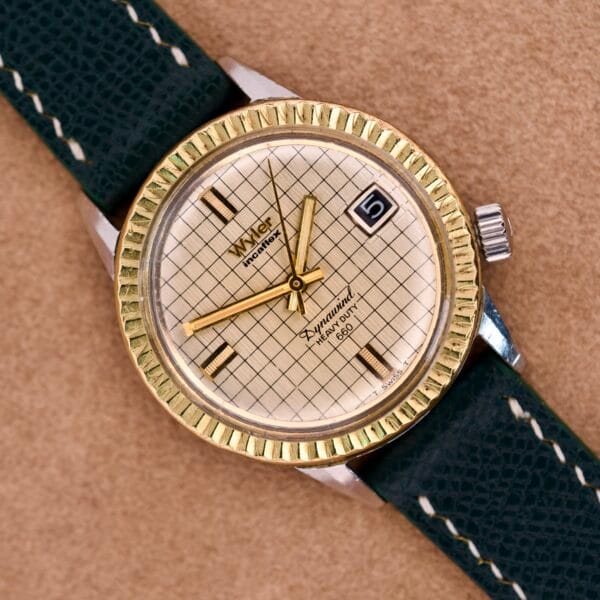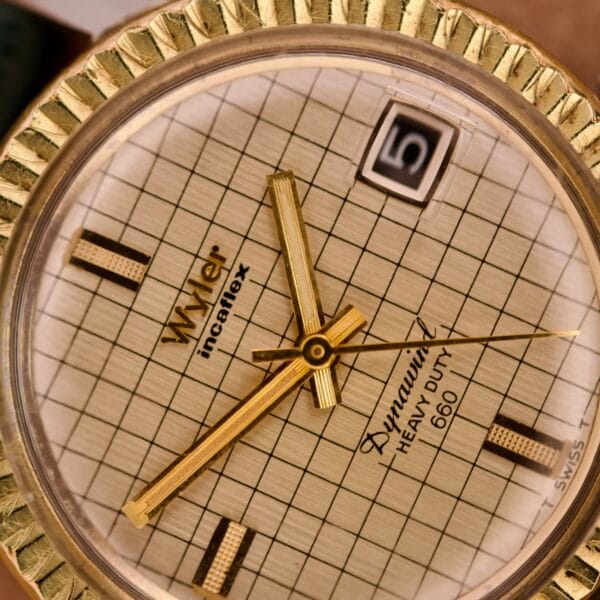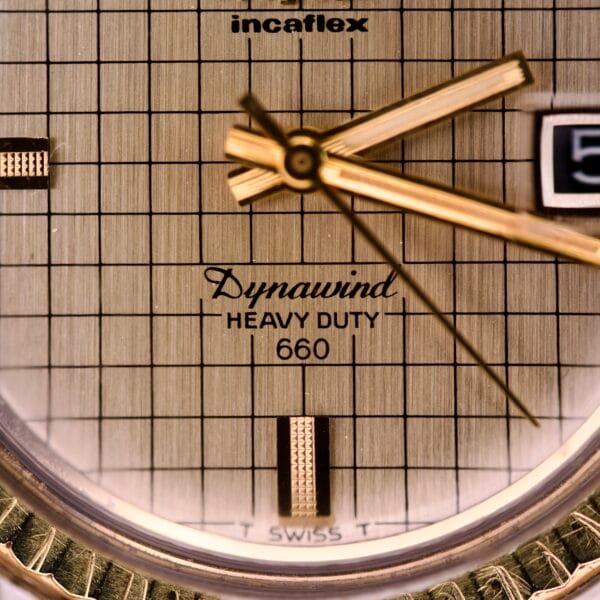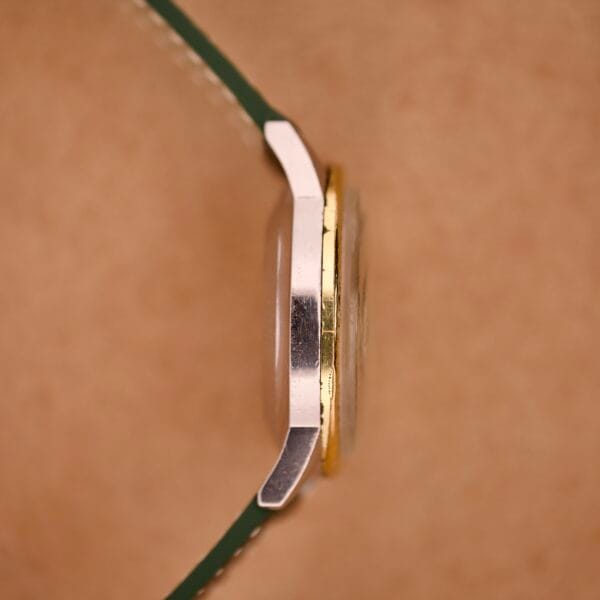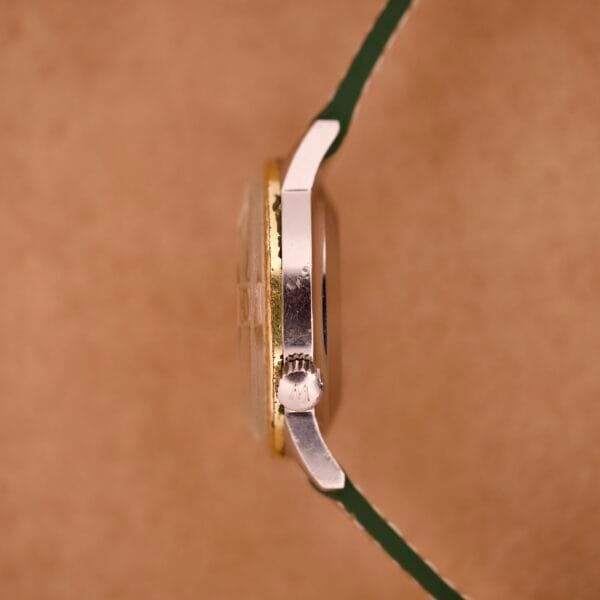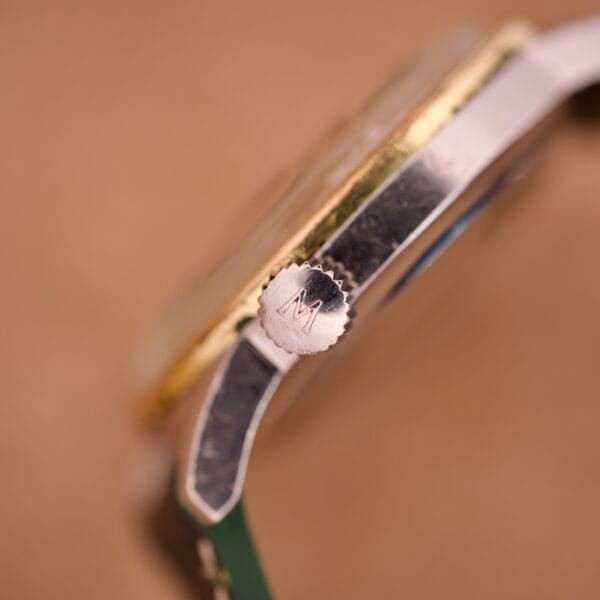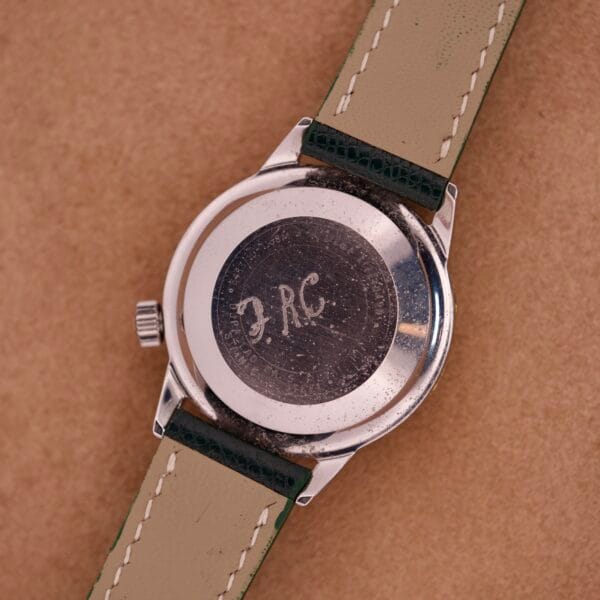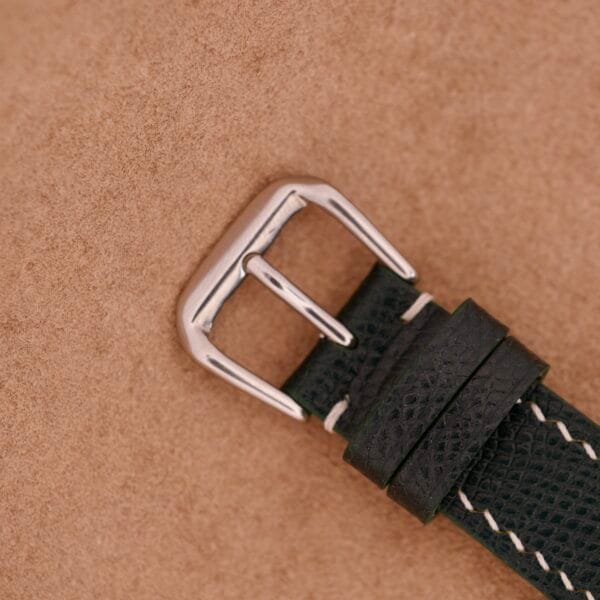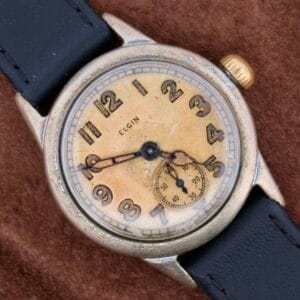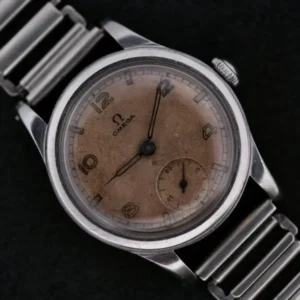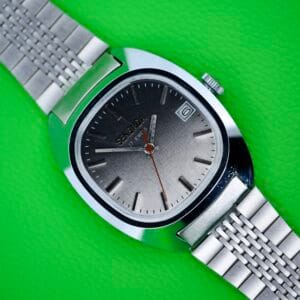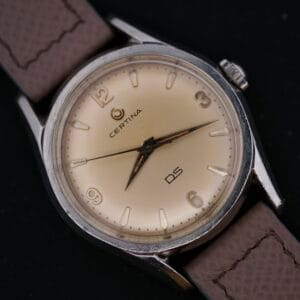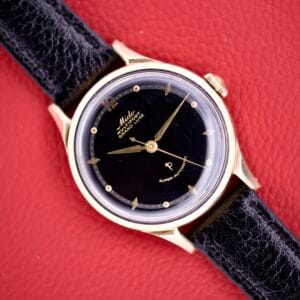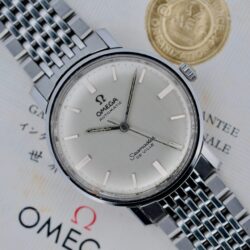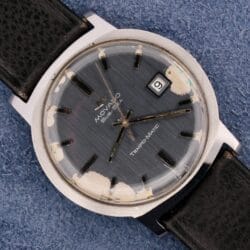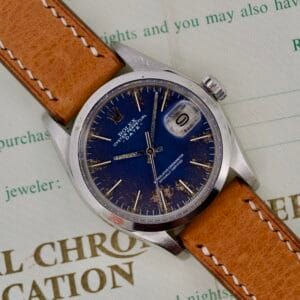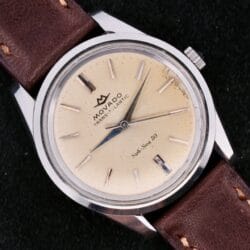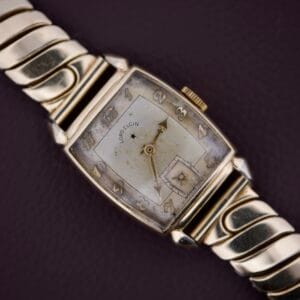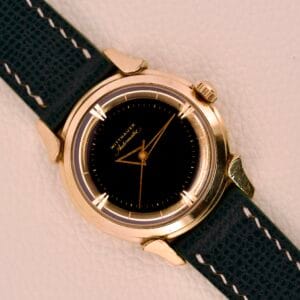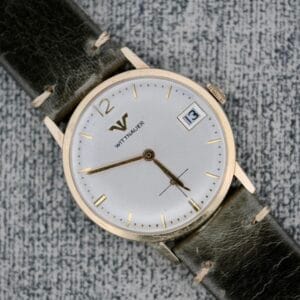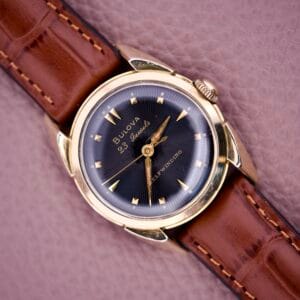The Wyler story is one of obsessive innovation. Paul Wyler’s masterstroke was the Incabloc balance wheel, a revolutionary design patented in 1927 that used flexible arms to absorb shock, making his movements famously durable. How durable? In one of the most audacious marketing stunts in watchmaking history, Wyler had their watches dropped from the top of the Eiffel Tower in 1956—and they kept on ticking. The “Heavy Duty 660” designation on this model wasn’t just for show; it signified a water resistance of 660 feet, achieved through a robust, front-loading monocoque case. This was serious tool-watch engineering, wrapped in a package of pure 1960s swagger.
This particular example is a fantastic specimen of the breed. What immediately grabs you is that stunning “graph paper” crosshatch dial. It’s a texture you just don’t see, giving the watch a technical, architectural feel that is utterly unique. The applied gold-tone markers with their black onyx inserts add a layer of depth and sophistication, perfectly complemented by the sharp dauphine handset. But the visual feast doesn’t stop there. The case is crowned with a wildly cool, heavily textured gold-plated bezel that feels more like a piece of brutalist sculpture than a simple watch component. It’s a design that is both rugged and unapologetically elegant.
Turning the watch over, the stainless steel caseback bears a hand-engraved set of initials: “J.R.C.” Far from being a flaw, this is a tangible connection to a past life, a whisper of a story from the original owner. We love these kinds of details. The watch shows honest wear, with some gentle brassing to the high points of the gold-plated bezel and lugs, giving it a character that can only be earned over decades. The dial itself is immaculate, and the original signed “W” crown is still present. This is a survivor, a watch that has clearly seen a bit of the world.

